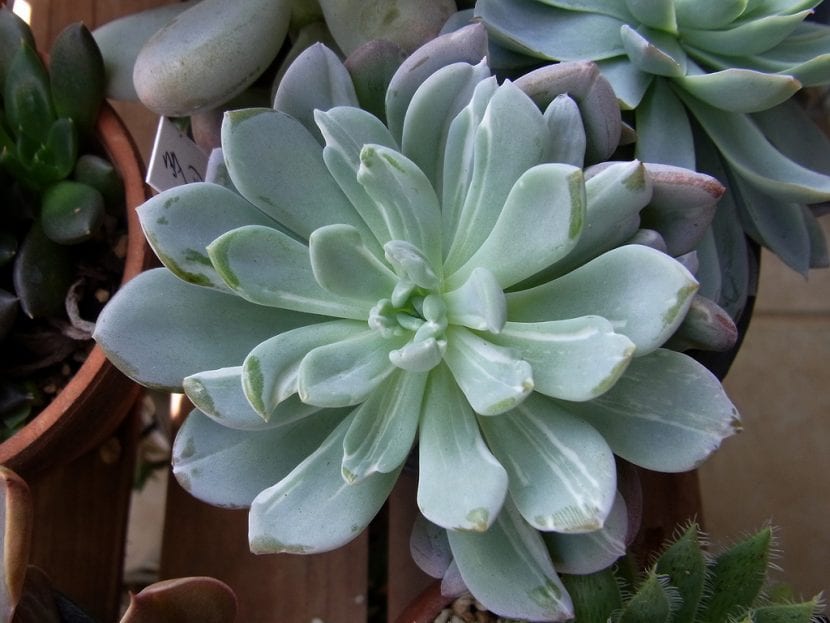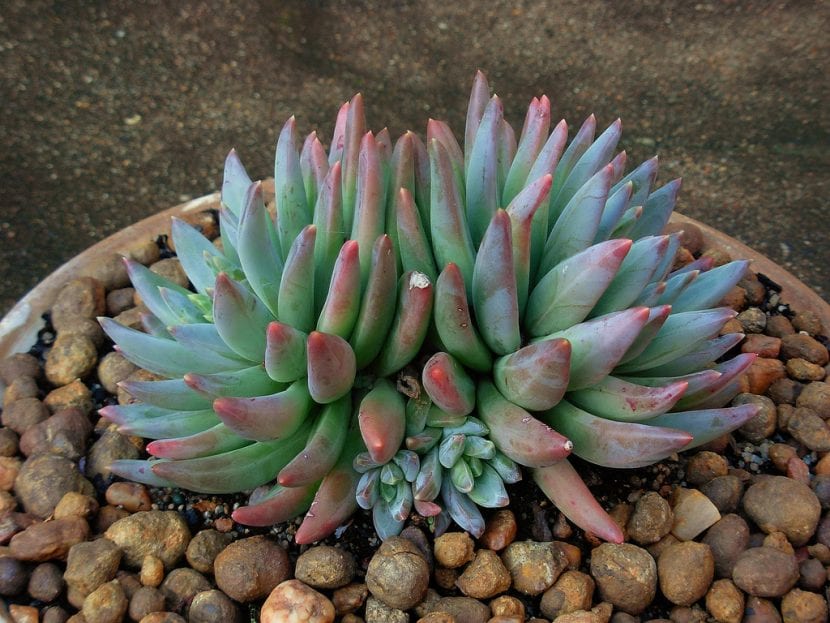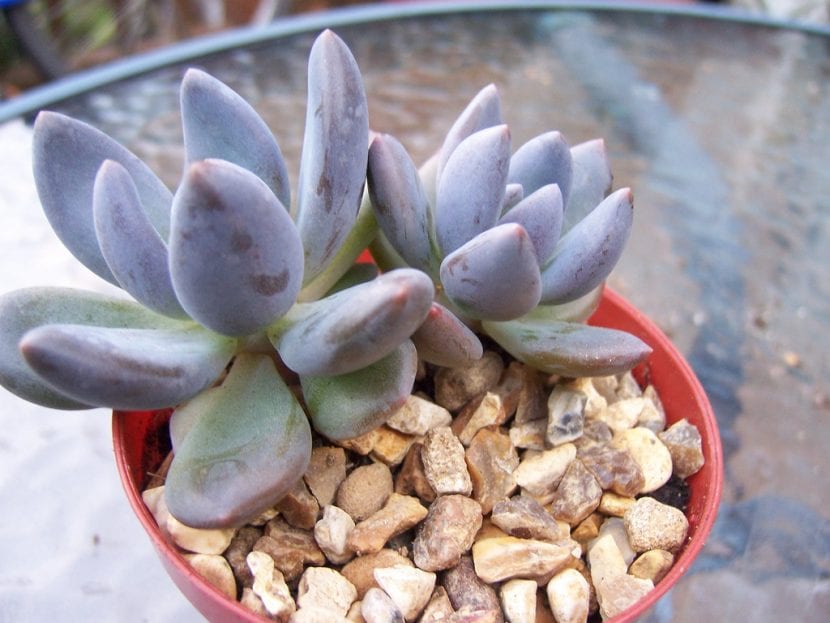
Pachyveria 'Scheideckeri'
All the Pachyveria They are a very unique group of plants, since they are hybrids of Echeveria x Pachyphytum. Thus, they have characteristics of both genera, but although there are several types, in reality there are only three accepted species, which are the P. albomucronata, P.paraxa and P. sempervivoides.
Despite this, they are so decorative and easy to care for that in fact they only need well-drained soil, lots of sun and little water.

Pachyveria 'Little Jewel' (or also called x Pachyveria glauca)
This is a relatively new genre, so much so that it wasn't until 1926 that it was described. They are characterized by forming rosettes composed of thick and fleshy leaves, almost cylindrical in some varieties, of colors that can be gray-blue or pinkish. Flowers sprout in spring, in hanging clusters and are orange.
They do not require any special care, so they are highly recommended for beginners. Of course, it is very important that be in sunny places, who protect them from frostand that they are watered from time to time but avoiding waterlogging. In this sense, and to avoid problems, it is advisable to use substrates with good drainage, such as black peat mixed with perlite in equal parts, pomx or river sand with 30% black peat, or even akadama if you live in a very climate rainy.

Pachyveria 'Blue mist'
Although they are small, not exceeding 20cm in height, you have to remember change them pot every 2 or 3 years during the spring or summer, renewing the substrate each time so that they can continue to feed on the nutrients that their roots will absorb from it.
How to have new copies? Very easy: making leaf cuttings or separating the new shoots that are emerging from the stem by hand or with pruning shears previously disinfected with alcohol. Once you have them, put the leaves lying on the surface of the substrate, covered with a little soil, or plant the stems as if it were a rooted plant. You will see that in a few days they will take root.
Have you heard of the Pachyveria?
Hello, I have a pachyveria and it started to be dishonest, the leaves are very loose, what can I do? Thanks a lot
Hi Katherine.
How often do you water it? If the leaves begin to be loose or soft, it may be due to overwatering or lack of light.
To avoid problems, it is advisable to let the soil dry between waterings and avoid putting a plate under it, since otherwise the roots will remain in contact with the water. Likewise, it should be put in an exposed area sl ol.
A greeting.
Hello, months ago I started the passion for succulents. I have informed myself every day to have the right care and achieve a beautiful garden. But I have noticed that some of my succulents have lengthened (the stem has grown up to 12cm) and their leaves come out individually and not in the spongy and joint way as they initially were, as is the case with my Pachyveria. Can you please explain to me what is happening with them, I would appreciate your opinion.
Hi Lorena.
It may not be giving them the light they need. Pachyveria are plants that like light a lot, and even direct sun if they acclimatize little by little.
I recommend you put it in an area where it has more light; this way you will have better growth.
A greeting.